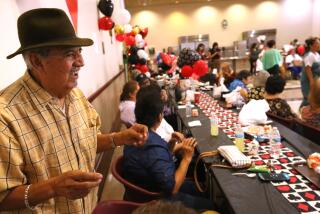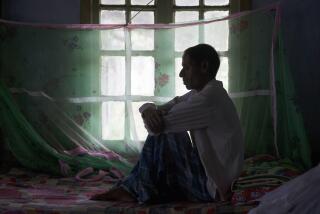Marin is California’s healthiest county for a third straight year
- Share via
With relatively low rates of smoking, teen births and obesity, Marin County ranks as the healthiest county in California for the third year in a row, according to a new national survey.
The least healthy county is Trinity, in Northern California, where the number of people who die before age 75 is more than double that of Marin.
The rankings, produced by the University of Wisconsin Population Health Institute and the Robert Wood Johnson Foundation, compare counties throughout the state — and nation — based on both physical and socioeconomic factors. The third annual report is being released today at https://www.countyhealthrankings.org.
Researchers determined the health of a county using five main factors: premature deaths, low-birth-weight infants, the percentage of people who say they are in poor or fair health and the number of days people reported being in poor physical or mental health. They also considered other measures such as smoking and obesity rates, teen births, preventable hospital stays, childhood poverty rates, education and air pollution levels.
The report also has some new measures this year, including the number of fast-food restaurants and the level of physical inactivity.
Los Angeles County ranked 28th, out of the 56 counties ranked. Here, 22% of adults are obese, 19% are inactive and 16% drink excessively. In addition, 22% report being in poor or fair health.
“We want to do better,” said Dr. Jonathan Fielding, director of public health for the county. “There is no question about that. But we are a very large, diverse county, and we have the diversity of problems along with that.”
The rankings are designed to show county leaders and residents that health depends on more than just doctors’ visits. Poverty, education and crime rates can also have significant effects.
“Where we live matters greatly to our health,” said Dr. James S. Marks, senior vice president at the Robert Wood Johnson Foundation. “These rankings, we hope, will open that discussion up for these counties so that their leaders will begin to say, ‘What can we do to improve our county and begin to work on it?’”
The top five healthiest counties in California are Marin, Santa Clara, San Benito, Placer and San Mateo. The bottom five are Trinity, Del Norte, Siskiyou, Tehama and Lake.
The rankings can motivate leaders to improve the health of their counties, said Dr. Patrick Remington, associate dean for public health at the University of Wisconsin School of Medicine and Public Health.
“It serves as a call to action for people to think about how their community compares to others,” he said.
San Bernardino County, for example, is working to move up from its ranking of 41st. The county is pushing every city to launch a “healthy communities” initiative to improve residents’ health. Some cities have changed zoning policies to allow community gardens or started cooking classes or walking clubs.
But the county is spread over 20,000 square miles and has consistently high air pollution levels and widespread unemployment.
“Every year we take the rankings very seriously,” said the county’s health officer, Dr. Maxwell Ohikhuare. “We have made some incremental improvements, but we still feel that there are a lot of challenges ahead of us.”
Generally, he said, there is more awareness among residents about what improves health, including eating better and getting more exercise. “Those things are starting to resonate,” he said.
Los Angeles County, too, has taken steps to change the physical environment to promote exercise and reduce obesity. Earlier this year, the county supervisors approved an ordinance requiring new developments to have wider sidewalks and bicycle parking and making it easier for communities to start gardens and hold farmers markets.
The county is focusing on several issues, including crime rates, air pollution and smoking cessation, Fielding said. “What we have to understand is that it takes a number of years to make a dent in all of these,” he said.
More to Read
Sign up for Essential California
The most important California stories and recommendations in your inbox every morning.
You may occasionally receive promotional content from the Los Angeles Times.













